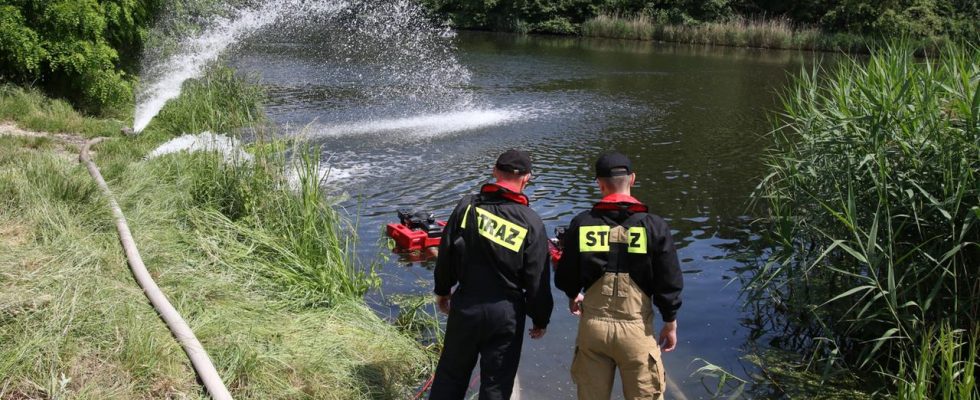In Poland, hundreds of kilograms of fish have died in side canals of the Oder. The Ministry of the Environment in Warsaw is alarmed and convened a crisis team. Last summer there was a massive death of fish in the Oder.
Last August there was a massive death of fish in the Oder – an environmental catastrophe that not only hit Poland but also Brandenburg. Now the Polish Ministry of the Environment is sounding the alarm again and has already convened a crisis team.
The background to this is that dead fish were discovered in two channels in the Polish administrative district of Opole at the beginning of the week – according to the dpa news agency, a total of around 450 kilograms. In addition, the poisonous golden alga Prymnesium parvum had already been detected in April and May. Affected were the Gleiwitz Canal, which branches off the Oder, and the Kedzierzyn Canal, which branches off from the Gleiwitz Canal and leads to the nitrogen works in Kedzierzyn-Kozle.
“High risk” that itself environmental disaster repeated
“This is already an important warning signal that we need to be on standby and the risk of a repeat of last year’s situation is very high,” Poland’s Environment Minister Anna Moskwa warned in an interview with Polish public radio. She also pointed out that the water temperature in the Oder had risen sharply – a clear risk factor.
That is why a crisis team has already been convened, according to Moskva. The committee has already made initial recommendations: the old arms of the Oder should therefore be temporarily closed off and natural barriers should be built in retention basins to stop the development of the golden algae. In addition, the discharge of industrial and domestic waste water should be systematically controlled, depending on the water temperature. The crisis team continues to advise enriching the waters with oxygen.
Hundreds of tons of fish died
In August 2022, a massive fish kill in the Oder had puzzled experts for a long time. After extensive investigations, final report in September came to the conclusion that the salinity in the water had risen sharply, which, together with other factors, had led to a massive increase in the brackish water alga Prymnesium parvum. The alga produces a toxic substance that can be fatal to fish and other aquatic organisms, according to the Federal Environment Ministry’s website.
At the end of August, the Institute for Inland Fisheries reported that up to 400 tons of fish had died in the Oder as a result of the environmental disaster, which corresponded to 25 to 50 percent of the entire stock.

